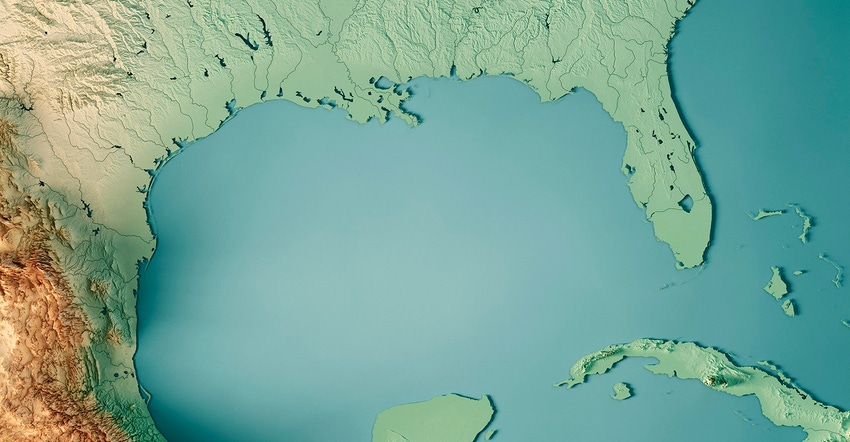June 11, 2019

National Oceanic and Atmospheric Administration scientists forecast this year’s Gulf of Mexico ‘dead zone’ to be about the size of Massachusetts.
The dead zone, or hypoxic zone, is an area of low to no oxygen that can kill fish and other marine life. It’s forecast to be approximately 7,829 square miles. The record size of 8,776 square miles was set in 2017. The 5-year average size is 5,770 square miles. The annual prediction is based on U.S. Geological Survey river flow and nutrient data.
The annually recurring Gulf of Mexico hypoxic zone is primarily caused by excess nutrient pollution from human activities, such as urbanization and agriculture, occurring throughout the Mississippi River watershed. Once the excess nutrients reach the Gulf they stimulate an overgrowth of algae, which eventually die, then sink and decompose in the water. The resulting low oxygen levels near the bottom are insufficient to support most marine life and have long-term impacts to living marine resources that are unable to leave the area. Considered one of the world’s largest, the Gulf of Mexico dead zone occurs every summer.
What caused larger dead zone?
A major factor contributing to the large dead zone this year is the abnormally high amount of spring rainfall in many parts of the Mississippi River watershed, which led to record high river flows and much larger nutrient loading to the Gulf of Mexico. This past May, discharge in the Mississippi and Atchafalaya rivers was about 67% above the long-term average between 1980 and 2018. USGS estimates that this larger-than average river discharge carried 156,000 metric tons of nitrate and 25,300 metric tons of phosphorus into the Gulf of Mexico in May alone. These nitrate loads were about 18% above the long-term average, and phosphorus loads were about 49% above the long-term average.
USGS operates more than 3,000 real-time stream gauges, 50 real-time nitrate sensors, and 35 long-term monitoring sites throughout the Mississippi-Atchafalaya watershed, which drains all rivers and streams in parts or all of 31 states and 2 Canadian provinces into the Gulf of Mexico.
NOAA's mission is to understand and predict changes in the Earth's environment, from the depths of the ocean to the surface of the sun, and to conserve and manage our coastal and marine resources.
Source: National Oceanic Atmospheric Administration and U.S. Geological Survey, which is solely responsible for the information provided and is wholly owned by the source. Informa Business Media and all its subsidiaries are not responsible for any of the content contained in this information asset.
You May Also Like




